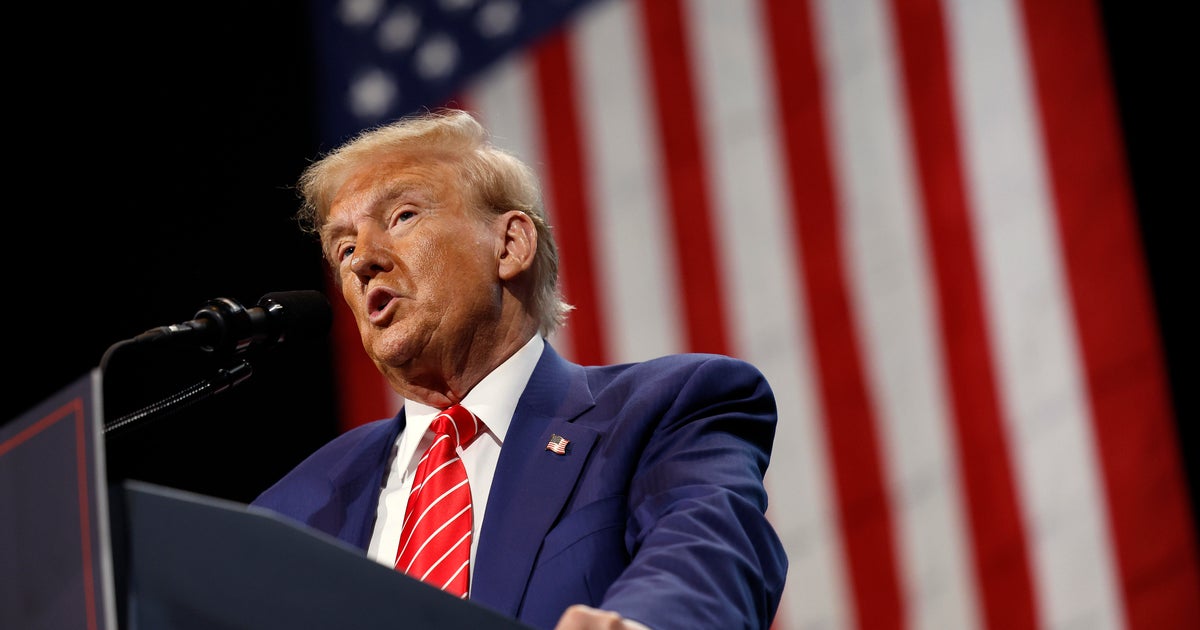CBS News
Judge in Trump 2020 election interference case rules records, evidence to be unsealed Friday

Judge Tanya Chutkan on Thursday denied former President Donald Trump’s request to delay until after the election the unsealing of court records and exhibits in the 2020 election interference case and said the court would release evidence submitted by the government on Friday.
In her five-page order, Chutkan said there was a presumption that there should be public access to “all facets of criminal court proceedings” and that Trump, in claiming the material should remain under seal, did not submit arguments relevant to any of the factors that would be considerations. Instead, Trump’s lawyers argued that keeping it under seal for another month “will serve other interests,” Chutkan wrote. “Ultimately, none of those arguments are persuasive.”
She had been tasked with deciding whether the appendix and brief submitted by special counsel Jack Smith earlier this month should be made available to the public, but with certain information kept secret. Chutkan allowed the brief to be made public last week, though it included redactions of names of alleged co-conspirators, campaign staff and White House officials, as well as certain references to grand jury proceedings.
Shortly after Trump lodged his opposition to any additional disclosures, Chutkan granted Smith’s request to file the appendix with his proposed redactions on the public docket. But she also granted Trump’s request to put her decision on hold for seven days while he explored his options for further litigation.
The special counsel indicated that much of the appendix contains sensitive materials that should be shielded from the public. That evidence, subject to a protective order issued at the start of the case last year, likely includes transcripts of testimony before a grand jury and FBI interviews.
Trump’s lawyers had said that Chutkan shouldn’t allow the release of any additional information now, claiming in a filing that the “asymmetric release of charged allegations and related documents during early voting creates a concerning appearance of election interference.”
Chutkan denied this would be an “asymmetric release,” pointing out that the court was not “‘limiting the public’s access to only one side.'” She said Trump was free to submit his “legal arguments and factual proffers regarding immunity at any point before the November 7, 2024 deadline.”
She also said it was Trump’s argument that posed the danger of interfering with the election, rather than the court’s actions.
“If the court withheld information that the public otherwise had a right to access solely because of the potential political consequences of releasing it, that withholding could itself constitute — or appear to be — election interference,” Chutkan wrote. “The court will therefore continue to keep political considerations out of its decision-making, rather than incorporating them as Defendant requests.”
She said that in a separate order Friday, the court would put the appendix with Smith’s proposed redactions in the public docket.
Proceedings in the case against Trump were revived in August after the Supreme Court ruled that former presidents are entitled to some immunity from criminal charges arising from official acts they took while they were in the White House.
Prosecutors sought a new indictment against Trump to comply with the high court’s decision that contained a more narrow set of allegations and removed references to his discussions with Justice Department officials. The court’s conservative majority found those interactions were off-limits for prosecutors.
Trump was initially charged in August 2023 with four counts stemming from what Smith alleged was a scheme to subvert the transfer of power after the 2020 presidential election. The former president still faces those same four charges in the new indictment and pleaded not guilty.
The two sides are now debating whether the conduct alleged in the slimmed-down indictment is protected by presidential immunity, a determination that will ultimately be made by Chutkan. Trump’s lawyers have said they will again seek to have the entire case thrown out on presidential immunity and other grounds.
Robert Legare and
contributed to this report.
CBS News
Ritchie Boys | 60 Minutes Archive

Watch CBS News
Be the first to know
Get browser notifications for breaking news, live events, and exclusive reporting.
CBS News
The significance of U.S. officials in Syria amid search for Austin Tice

Watch CBS News
Be the first to know
Get browser notifications for breaking news, live events, and exclusive reporting.
CBS News
The Iron River | Sunday on 60 Minutes

Watch CBS News
Be the first to know
Get browser notifications for breaking news, live events, and exclusive reporting.








